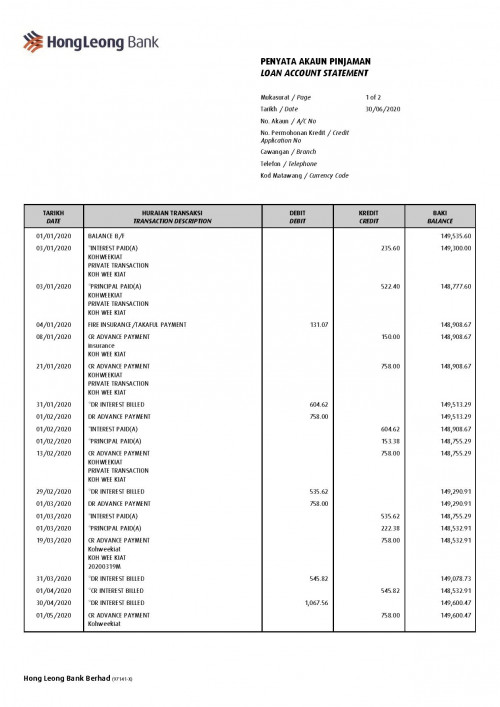Bank Negara lowers OPR by 25bps to 3%
BANKING
Tuesday, 7 May 2019
3:00 PM MYT
KUALA LUMPUR: The Monetary Policy Committee (MPC) of Bank Negara Malaysia decided to reduce the Overnight Policy Rate (OPR) to 3% at its meeting on Tuesday.
It said the ceiling and floor rates of the corridor for the OPR are correspondingly reduced to 3.25% and 2.75% respectively.
It said the baseline projection is for the Malaysian economy to grow within the projected range of 4.3% - 4.8%.
“However, there are downside risks to growth from heightened uncertainties in the global and domestic environment, trade tensions and extended weakness in commodity-related sectors,” it said.
Bank Negara said while domestic monetary and financial conditions remain supportive of economic growth, there are some signs of tightening of financial conditions.
“The adjustment to the OPR is therefore intended to preserve the degree of monetary accommodativeness.
“This is consistent with the monetary policy stance of supporting a steady growth path amid price stability. The MPC will continue to monitor and assess the balance of risks surrounding the outlook for domestic growth and inflation,” it said.
On the global economy, it said it continues to expand moderately. While growth outcomes for several major economies were better than expected during the first quarter, underlying economic conditions continue to suggest moderation going forward.
Considerable downside risks to global growth remain, stemming from unresolved trade tensions and prolonged country-specific weaknesses in the major economies, further dampening global trade and investment activities.
Although the tightening in global financial conditions has eased somewhat, heightened policy uncertainties could lead to sharp financial market adjustments, further weighing on the overall outlook.
“For Malaysia, latest developments point towards moderate economic activity in the first quarter of 2019.
“Looking ahead, slowing global demand conditions and subdued growth of key trading partners will continue to weigh on the external sector,” it said.
Bank Negara said domestically, stable labour market conditions and capacity expansion in key sectors will continue to drive household and capital spending.
Headline inflation increased to 0.2% in March 2019 (February: -0.4%), due mainly to the less negative transport inflation at -3.0% (February: -6.8%).
Underlying inflation, as measured by core inflation remained stable at 1.6% in March 2019.
(Core inflation is computed by excluding price-volatile and price-administered items. It also excludes the estimated direct impact of consumption tax policy changes.)
In the immediate term, inflation is expected to remain low mainly due to policy measures..
These include the price ceiling on domestic retail fuel prices until mid-2019 and the impact of the changes in consumption tax policy on headline inflation.
For 2019 as a whole, average headline inflation is expected to be broadly stable compared to 2018. The trajectory of headline inflation will continue to be dependent on global oil prices.
Underlying inflation is expected to remain stable, supported by the continued expansion in economic activity and in the absence of strong demand pressures.
The domestic financial markets have remained resilient, despite periods of volatility primarily due to global developments, it said.
Read more at
https://www.thestar.com.my/business/busines...EvfziLyV6uoi.99 

 Dec 5 2014, 11:01 AM, updated 11y ago
Dec 5 2014, 11:01 AM, updated 11y ago
 Quote
Quote










 0.1356sec
0.1356sec
 0.48
0.48
 6 queries
6 queries
 GZIP Disabled
GZIP Disabled